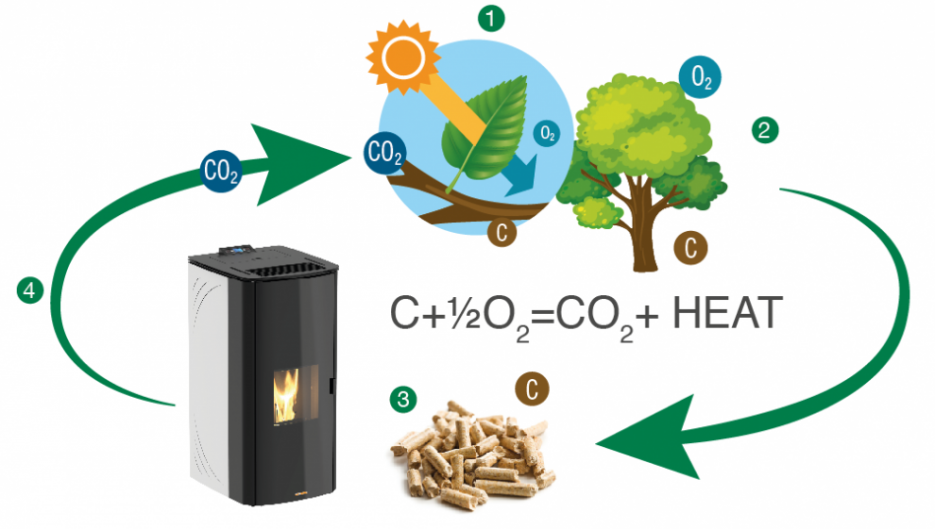24 February 2022
BIOENERGY IS RENEWABILITY
The objective of WIESBERG products is, in line with the requirements of the most restrictive European standards, to help protect the environment as much as possible, significantly reduce combustion emissions including the production of CO2, thus making heating with biomass fuel (wood, pellets, etc.) increasingly ecological, as well as safe and with maximum user comfort. All our products benefit from tax breaks and incentives among the highest, rewarded by continuous and incessant technological research.
The term biomass indicates all those materials of organic / vegetable origin which, unlike hydrocarbons, have not undergone fossilization processes (unlike oil, coal or natural gas).
Why burn wood (or derivatives) and therefore trees and plants, instead of other fossil fuels?
Simple, nature itself shows us how it is possible to keep our system in balance.
In fact, thanks to the mechanism of chlorophyll photosynthesis, the sun and plants ensure the right proportion of oxygen to the air we breathe.
Plants absorb carbon dioxide from the atmosphere (1), thus recovering carbon, necessary for their growth and, at the same time, they return oxygen, essential to our life and that of the planet (2).
During proper combustion, the carbon of the wood (3), combined with the oxygen in the air, produces the exact amount of carbon dioxide absorbed by the tree during its life cycle (4).
While fossil fuels are subject to depletion, wood, pellets and other wood products represent a renewable source of energy.
For this reason, installing a WIESBERG appliance running on pellets, wood or dual fuel is an “eco-friendly” choice, responsible towards our planet, while guaranteeing maximum comfort.
1. Chlorophyll photosynthesis: leaves absorb carbon dioxide from the atmosphere.
2. They recover carbon, their nourishment to live and grow, producing oxygen.
3. Wood obtained from trees is therefore a product of photosynthesis and is composed of carbon.
4. By burning wood (or derivatives) in the hearth, the carbon combines with oxygen and, thanks to the double combustion, releases the same amount of carbon dioxide that the tree had removed from the atmosphere to produce the wood.
5. The CO2 emitted by the chimney is equal to the CO2 absorbed by the plant. This is why it can be defined as "zero environmental impact".

